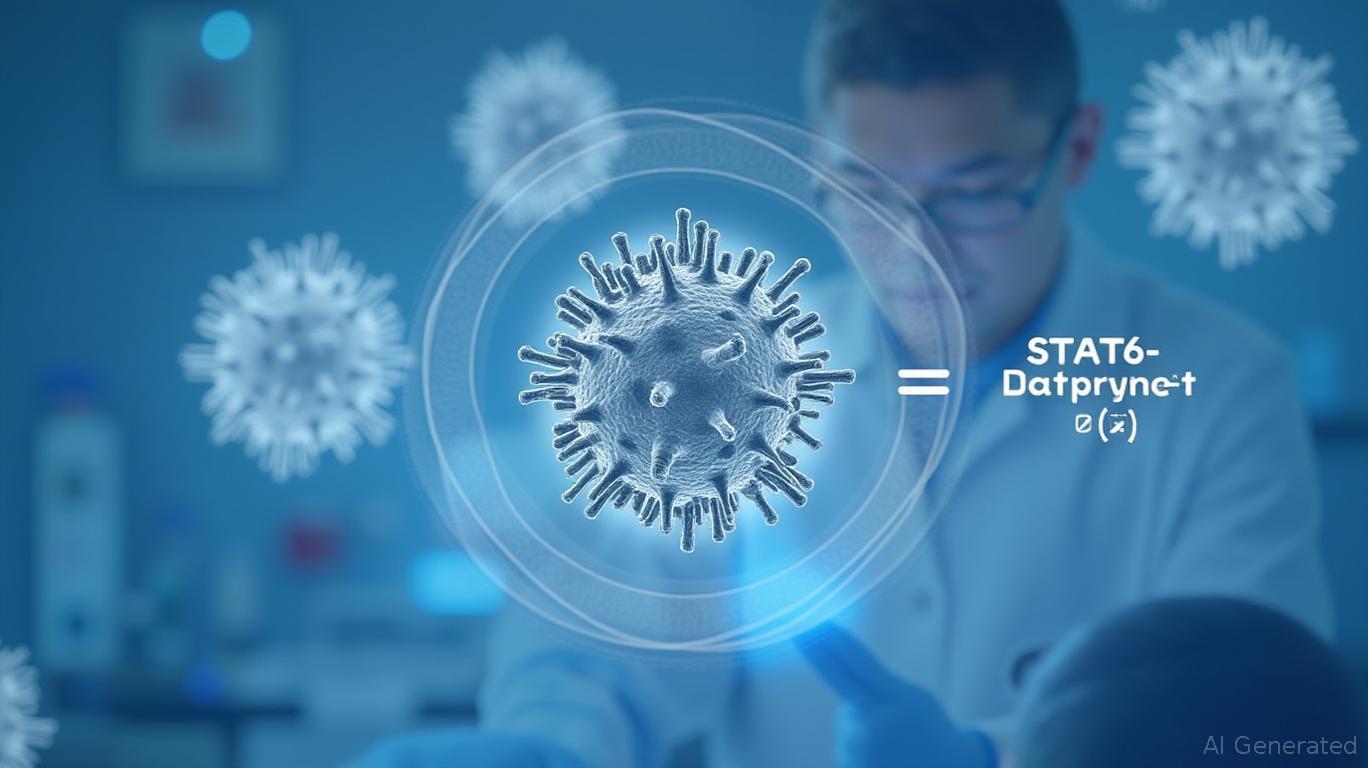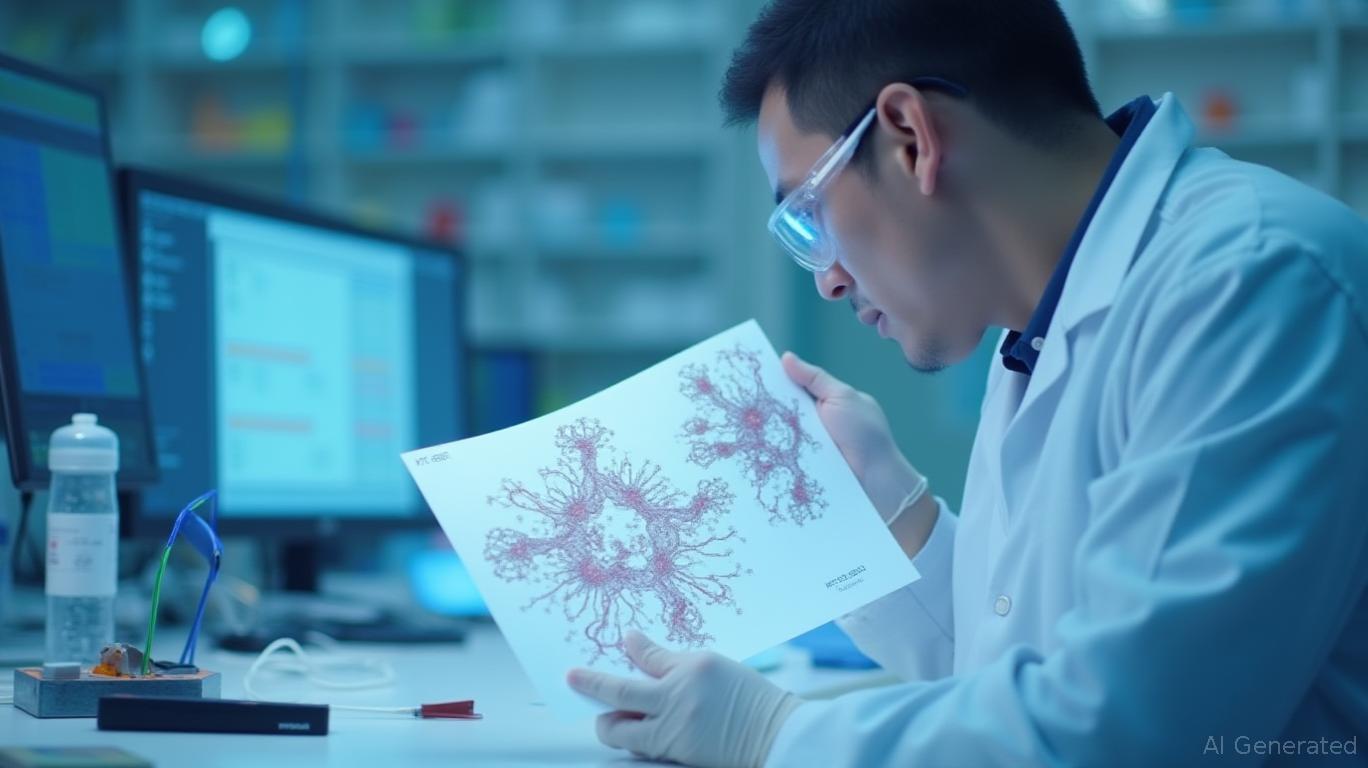Kymera Therapeutics' IRF5 Degrader: A Breakthrough in Autoimmune Therapies?
Kymera Therapeutics (NASDAQ: KYMR) has announced a pivotal advancement in immunology with its new first-in-class, orally administered IRF5 degrader, KT-579. This program targets a previously undrugged transcription factor central to autoimmune and inflammatory diseases, positioning Kymera at the forefront of a transformative wave in therapeutics. With preclinical data showcasing superior efficacy and a strategic focus on high-need diseases, KT-579 could redefine treatment paradigms for millions of patients.
Ask Aime: "Kymera's pioneering drug KT-579 could revolutionize autoimmune treatments."

The Scientific Case for IRF5 Degradation
IRF5 (Interferon Regulatory Factor 5) is a master regulator of immune responses, driving the production of pro-inflammatory cytokines (e.g., TNFα, IL-6) and Type I interferons. Its dysregulation is genetically linked to diseases like lupus, rheumatoid arthritis (RA), and inflammatory bowel disease (IBD). Traditional therapies, such as biologics targeting downstream cytokines, often fail to address the root cause of inflammation.
KT-579’s breakthrough lies in its ability to selectively degrade IRF5. Unlike small molecule inhibitors, which struggle with IRF5’s complex structure, Kymera’s degrader leverages targeted protein degradation technology to eliminate the protein entirely. Preclinical data shows:
- >90% IRF5 degradation in human immune cells and tissues at low oral doses.
- Sustained reduction in proteinuria (kidney damage marker) in lupus models.
- Equivalent or superior efficacy to existing biologics in RA joint swelling models.
- No off-target effects, even at doses 200x higher than anticipated human levels.
Clinical and Commercial Potential
Kymera’s program targets a multibillion-dollar market. The global autoimmune disease therapeutics market is projected to exceed $90 billion by 2028, with lupus alone affecting ~5 million people worldwide. Current treatments, such as anti-TNF biologics (e.g., Humira) and JAK inhibitors, are often injectable, have limited efficacy, or carry significant side effects. KT-579’s oral formulation and mechanism could address these shortcomings.
Ask Aime: What does the new IRF5 degrader from Kymera Therapeutics mean for lupus patients?
Strategic and Financial Positioning
Kymera’s pipeline now includes two leading oral immunology degraders: KT-579 (IRF5) and KT-621 (STAT6). This focus reflects a deliberate strategy to capitalize on the growing demand for oral therapies in autoimmune diseases. Financially, the company holds $775 million in cash, extending its runway to mid-2028—a critical advantage in a sector where development timelines are unpredictable.
Risks and Considerations
While the data is compelling, risks remain:
1. Clinical translation: Preclinical success does not guarantee human outcomes. Only 10% of autoimmune therapies advance from Phase 1 to FDA approval.
2. Competitive landscape: Companies like GSK (GSK) and Biogen (BIIB) are advancing IRF5-targeted therapies, though none have yet demonstrated IRF5 degradation.
3. Regulatory hurdles: First-in-class therapies face heightened scrutiny.
Conclusion: A High-Reward Opportunity
Kymera’s IRF5 degrader program has the potential to be a paradigm-shifting therapy in autoimmune diseases. With a validated target, best-in-class preclinical data, and a strategic focus on high-value indications, KT-579 could capture significant market share.
Key data points reinforce this thesis:
- Addressable market: Lupus alone represents a $5.7 billion market (EvaluatePharma 2024), with unmet needs in oral therapies.
- Pipeline efficiency: Kymera’s prioritization of KT-579 and KT-621 over sidelined programs (e.g., KT-295) signals a disciplined approach to R&D.
- Financial resilience: $775M in cash provides ample runway to navigate early-phase risks.
Investors should monitor Kymera’s Phase 1 start in early 2026 and the upcoming data readouts. While risks exist, the combination of scientific innovation, strong financials, and a vast addressable market positions Kymera as a compelling play in the autoimmune space—a sector poised for growth as global healthcare systems increasingly prioritize chronic inflammatory conditions.
In a crowded immunology field, Kymera’s IRF5 degrader may finally deliver on the promise of precision medicine.


_442a2dcc1749832873286.jpeg)
_e68fac6d1749831664430.jpeg)






